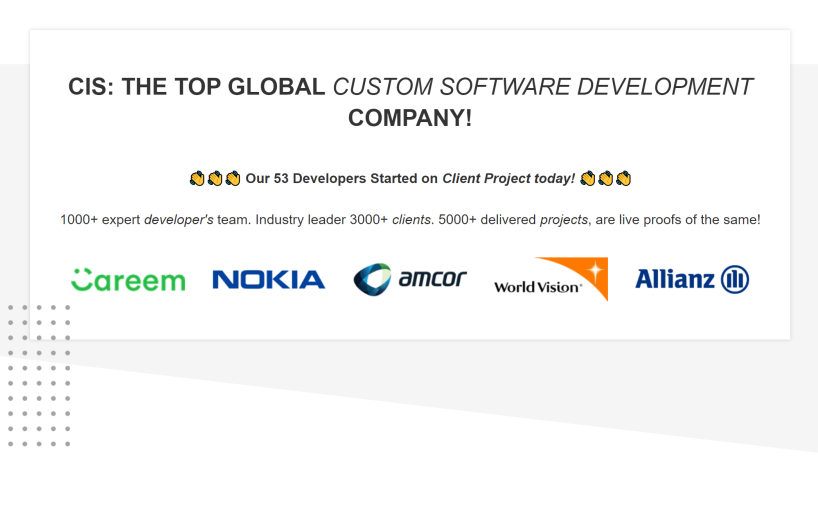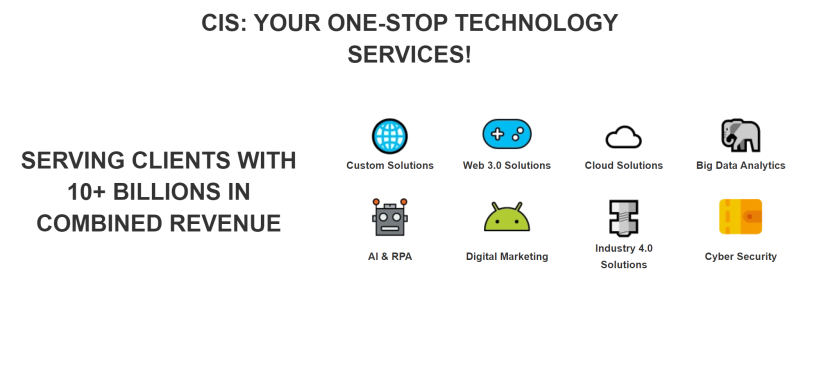Maximizing ROI: The Cost and Benefits of Adopting Odoo For Supply Chain for Your Business
- Odoo for supply chain - Detailed Analysis by Enterprise Solutions Experts



Why Mid-size Companies and Enterprises needs Odoo For Supply Chain:
Odoo for supply chain provides mid-size companies and enterprises with a comprehensive solution to manage their entire supply chain. It helps them streamline operations, maximize efficiency, and reduce costs. With Odoo's integrated platform, they can easily track inventory levels across multiple warehouses, optimize stock replenishment strategies based on demand forecasts, automate purchasing processes from suppliers, and monitor supplier performance in real-time. Additionally, it allows them to integrate with other enterprise systems such as ERP or CRM to get an end-to-end view of the entire supply chain process. This helps them make better decisions that drive cost savings and improved customer satisfaction.
Benefits of using Odoo For Supply Chain in Mid-size companies and Enterprises:
1. Increased Efficiency:
Odoo's supply chain management module helps to automate and streamline the process of inventory, purchasing and sales orders, thus increasing efficiency in your organization.
2. Improved Visibility:
With Odoo's supply chain management module, you can have a clear view on all aspects of your business operations including stock levels, order status, delivery timeframes etc., enabling better decision making for the company.
3. Cost Savings:
By automating processes with Odoo's SCM software you can reduce manual errors which will help to save costs associated with running your business operations efficiently.
4. Scalability & Flexibility :
The modular nature of Odoo allows businesses to scale up or down their operations without having to invest in additional hardware or software investments as they grow or shrink their customer base over time . This provides greater flexibility when it comes to managing resources more effectively while reducing overhead costs significantly at the same timeDetailed Features of Odoo For Supply Chain for Mid-size companies and Enterprises:
1. Automated Inventory Management:
Odoo for Supply Chain offers automated inventory management, allowing users to track their stock levels and manage orders in real-time. This helps businesses reduce costs associated with overstocking or understocking items.
2. Multi-Location Warehouse Support:
With multi-location warehouse support, businesses can easily manage multiple warehouses from a single platform and view consolidated reports across all locations. They can also quickly transfer stock between different warehouses as needed.
3. Advanced Purchasing & Procurement:
Odoo's advanced purchasing and procurement features allow companies to streamline the process of ordering materials and goods from suppliers while ensuring they get the best prices available on the market at any given time.
4. Sales Forecasting & Demand Planning:
Companies can use Odoo's sales forecasting tools to accurately predict future demand for products based on past performance data, helping them make better decisions about inventory stocking levels and supply chain operations overall.
5 .Real-Time Visibility Into Logistics Operations :
Businesses have access to real-time visibility into their logistics operations with Odoo's integrated tracking system that allows them to monitor shipments from start to finish so they know exactly where each item is at any given time during transit..Who are the Users of Odoo For Supply Chain:
Odoo for supply chain is used by many companies and organizations, including small businesses, mid-sized enterprises, government agencies, non-profits, and large corporations. Some notable customers include: Nestlé SA, Bosch Rexroth AG, Renault Group, Carrefour S.A., Grupo Bimbo S.A.B de C.V., Kuehne + Nagel International AG & Co KG., DHL Express (USA) Inc., AB InBev NV/SA, Vodafone India Limited and Coca Cola Company.
How to ensure Data Security and Compliance with Odoo For Supply Chain:
1. Use secure data storage methods such as encryption and tokenization to protect customer information.
2. Implement authentication measures such as two-factor authentication or biometrics for user access control.
3. Create a comprehensive security policy that outlines the rules and procedures for handling confidential data, including how it is accessed, stored, and transmitted within your supply chain network.
4. Monitor all activities related to Odoo for Supply Chain with an audit trail system in order to detect any suspicious activity or unauthorized access attempts quickly and accurately.
5. Ensure compliance with industry regulations by implementing processes that adhere to relevant standards (e.g., GDPR).
6. Establish regular vulnerability scans of the systems used in your supply chain operations in order to identify potential weaknesses before they can be exploited by malicious actors
How Odoo For Supply Chain can increase organization Productivity, Agility, and Profitability:
Odoo for supply chain can increase organization productivity, agility, and profitability by streamlining processes such as inventory management, warehouse operations, order fulfillment, shipping and more. It provides a single system of record that can be used to manage all aspects of the supply chain from end-to-end. This helps organizations reduce errors associated with manual data entry and eliminate redundant processes. Additionally, it enables real-time visibility into inventory levels across multiple locations which allows companies to make better decisions on when to replenish stock or adjust production schedules accordingly. Furthermore, its automated workflows help speed up order processing times while providing an audit trail for compliance purposes. Finally, Odoo's integrated analytics capabilities allow organizations to gain valuable insights into their operations which can then be used to improve performance and optimize costs.
How to Measure KPIs and increase Benefits of implementing Odoo For Supply Chain in Mid-size companies and Enterprises:
1. Track KPIs:
The first step to measuring the benefits of implementing Odoo for supply chain in mid-size companies and enterprises is to track key performance indicators (KPIs). These can include metrics such as order fulfillment rate, inventory accuracy, lead time reduction, cost savings, customer satisfaction levels, and more. Tracking these KPIs will help you measure the success of your implementation.
2. Identify Areas for Improvement:
Once you have tracked your KPIs over a period of time, it's important to identify areas where improvements can be made. This could involve making changes to existing processes or introducing new technology solutions that will help optimize operations and increase efficiency within the supply chain system.
3. Monitor Performance Regularly:
It's essential to monitor performance regularly in order to ensure that any improvements are having a positive effect on overall results. This can be done through tracking KPIs over time or conducting regular audits of the system itself in order to identify potential problems before they become too severe or costly for the company.
4. Invest in Training & Support:
Implementing Odoo for supply chain requires employees at all levels of an organization-from managers down-to understand how it works and learn how best to use it effectively within their respective roles and responsibilities within the company's operations team(s). Investing in training programs and providing ongoing support from experts who understand its features inside out is essential if organizations want maximum benefit from using this software solution long-termHow Odoo For Supply Chain can increase Employee Morale in your organization:
Odoo for supply chain can increase organization employee morale by streamlining processes, reducing paperwork and manual errors, automating mundane tasks, and providing real-time visibility into the entire supply chain. This will allow employees to focus on more important tasks while eliminating time-consuming activities. Additionally, improved collaboration between departments within an organization can lead to better communication and team spirit among employees. Finally, Odoo's analytics capabilities enable organizations to measure performance against goals in order to identify areas of improvement which can help motivate employees.
How Odoo For Supply Chain is Better than its Competitors:
Odoo for supply chain is better than its competitors because it provides a comprehensive suite of features, including automated inventory management, real-time analytics and reporting, order tracking, barcode scanning and labeling, warehouse management tools, and more. Odoo also offers an intuitive user interface that makes it easy to navigate the platform and quickly access data. Additionally, Odoo integrates with many popular eCommerce platforms to streamline online orders. Finally, Odoo's pricing model is highly competitive in comparison to other solutions on the market.
Cost to Develop & Implemention of Odoo For Supply Chain:
The cost to develop and deploy an Odoo for supply chain solution will vary depending on the scale of the project, complexity, customization needs, and other factors. Generally speaking, development costs can range from $10k-$50k or more. Deployment costs may include hardware setup fees as well as ongoing hosting fees.
Why outsourcing implementation services for Odoo For Supply Chain is better for Mid-size companies and Enterprises:
Outsourcing implementation services for Odoo for supply chain is beneficial to mid-size companies and enterprises because it can help them save time, money, and resources. By outsourcing the implementation of this software solution, companies can avoid having to hire in-house personnel or an IT team to manage it. Additionally, these companies will be able to access a broad range of expertise from experienced professionals who are trained in the use of Odoo for supply chain solutions. This allows them to quickly implement the system with minimal disruption and cost savings compared with hiring their own staff. Furthermore, they can benefit from ongoing technical support throughout the life cycle of their project as well as access best practices that have been developed by experts in the industry.


